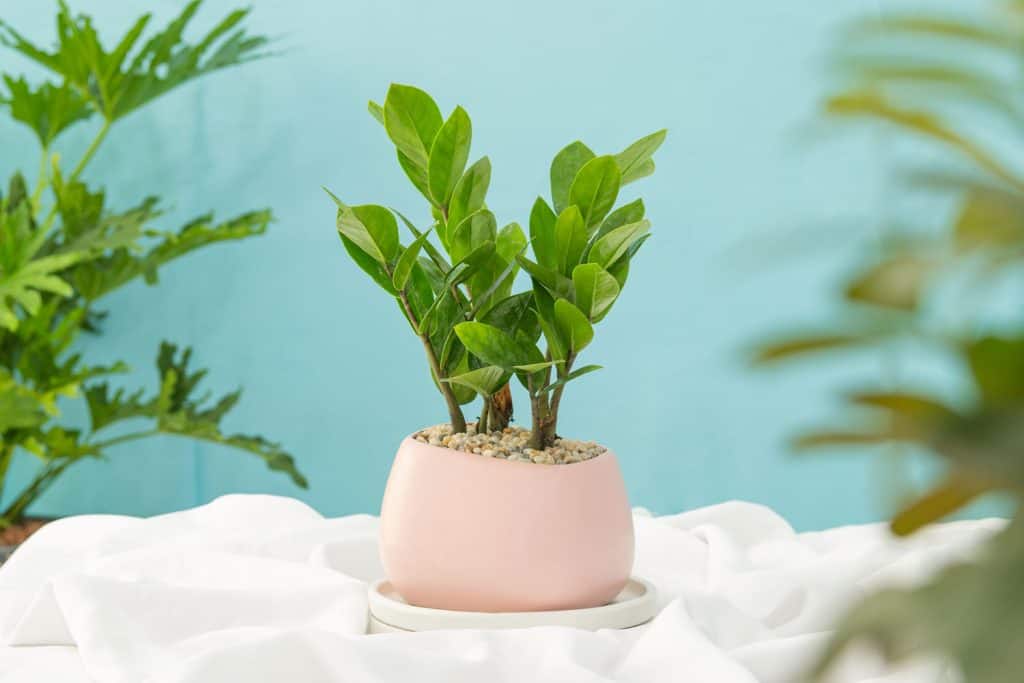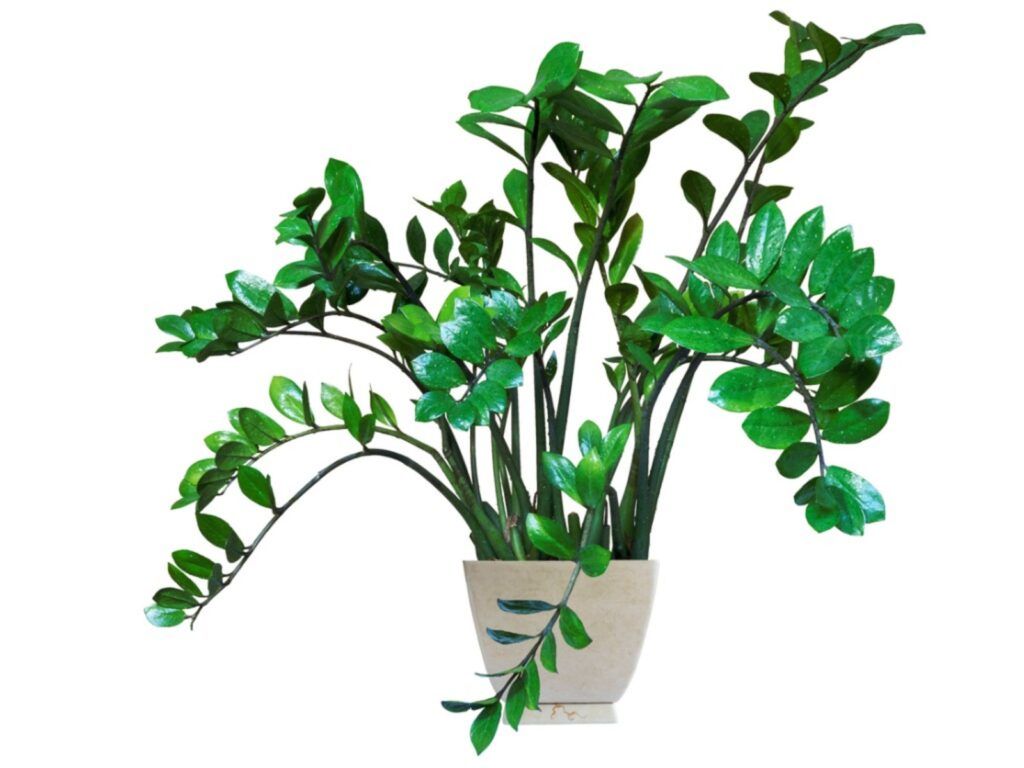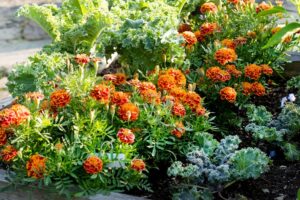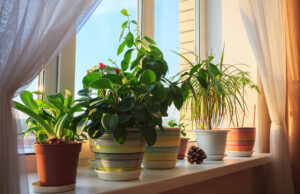ZZ Plant Care can help you avoid the frustration of bringing home indoor plants only to watch them wither away in just a few days. If you’ve been struggling with keeping indoor plants alive, you’re not alone. Many people experience the disappointment of nurturing a plant, only to see it decline rapidly despite their best efforts. But what if I told you there’s a plant that can withstand a bit of neglect and still thrive beautifully in your home? Meet the Zamioculcas zamiifolia, more commonly known as the ZZ plant!
On This Page
ZZ Plant Care Guide
Caring for a ZZ plant is a breeze, making it an ideal choice for both novice and experienced plant enthusiasts. In this ZZ Plant Care Guide, we’ll walk you through everything you need to know to keep your ZZ plant thriving. From the perfect lighting conditions to watering tips, soil preferences, and even propagation techniques, this guide covers it all. Whether you’re looking to add a low-maintenance plant to your collection or need a resilient houseplant that can survive a bit of neglect, the ZZ plant is the perfect choice. Let’s dive into the essential care practices that will ensure your ZZ plant stays healthy and vibrant for years to come.
Why the ZZ Plant is a Must-Have for Your Home
The ZZ plant is an indoor gardener’s dream come true. It’s an evergreen beauty that doesn’t demand much attention, making it ideal for those who love plants but may not have the time or experience to care for high-maintenance species. But what makes the ZZ plant so special? Let’s dive into the reasons why you should consider adding this resilient plant to your indoor garden:
**1. Low Maintenance: One of the most attractive features of the ZZ plant is its low maintenance requirements. Unlike many other houseplants, it doesn’t need direct sunlight, which means you can place it almost anywhere in your home, from the living room to the top of your refrigerator. Whether you live in a spacious home with plenty of windows or a cozy apartment with limited natural light, the ZZ plant can adapt and thrive.
**2. Air-Purifying: Did you know that the ZZ plant does more than just look pretty? It’s also an excellent air purifier. Studies have shown that it can remove toxins from the air, making your indoor environment healthier. This makes the ZZ plant not just a decorative piece but also a contributor to your overall well-being.
**3. Hardy and resilient: The ZZ plant is a tough cookie. It can survive in low-light conditions, requires very little water, and is resistant to pests. Even if you forget to water it for a few weeks, it won’t hold it against you! This resilience makes it an excellent choice for busy individuals or those who might be new to indoor gardening.
**4. Perfect Gift: Looking for a thoughtful and lasting gift? The ZZ plant makes a fantastic present for any occasion—birthdays, housewarmings, or even just because. Its elegant appearance and easy care requirements mean it’s a gift that keeps on giving, bringing joy and greenery into the recipient’s life.
How to Care the ZZ Plant
Now that you’re convinced the ZZ plant is the right choice for your home, let’s talk about how to care for it. While the ZZ plant is famously low-maintenance, a little knowledge goes a long way in ensuring it stays healthy and vibrant for years to come.
1. Ideal Growing Conditions ZZ Plant
Temperature: The ZZ plant thrives in warm conditions, specifically in temperatures ranging from 15°C to 25°C. It’s particularly fond of spring, a season when it can grow most vigorously. If you live in an area with colder winters, don’t worry! While the ZZ plant may slow down during the winter months, it will perk right back up as soon as the weather warms.
Light: One of the most remarkable features of the ZZ plant is its ability to thrive in low light conditions. This plant doesn’t require direct sunlight and can do well in a variety of light situations—whether it’s bright, medium, or low light. However, it’s essential to avoid placing the ZZ plant in direct sunlight, as this can cause its leaves to dry out and become damaged. Instead, find a spot with plenty of indirect light, such as near a window with sheer curtains or in a well-lit room without direct sun exposure.
2. Watering ZZ Plant
Less is More: Overwatering is one of the few ways you can harm a ZZ plant. This plant is incredibly drought-tolerant, thanks to its thick, tuberous roots, which store water for long periods. Before watering, always check if the soil is dry. It’s better to err on the side of underwatering than overwatering. The rule of thumb is to water only when the top two inches of soil are completely dry.
Avoid Overwatering: Too much water can lead to root rot, a condition where the plant’s roots begin to decay due to excessive moisture. Symptoms include yellowing leaves and melting stems. If you notice these signs, remove the affected parts immediately, allow the soil to dry out completely, and adjust your watering habits. If the root rot is severe, you might need to repot the plant in fresh, well-draining soil.
3. Soil and Potting ZZ Plant
Well-Drained Soil: The ZZ plant’s soil should be well-drained but slightly compact. While some suggest using succulent soil, which is often very loose and sandy, I’ve found that the ZZ plant prefers something a bit more substantial. A mix of your local garden soil with compost, sand, and a little cocopeat works best. This combination allows for proper drainage while providing enough support for the plant’s roots.
Pot Selection: When it comes to choosing a pot for your ZZ plant, it’s important to remember that this plant prefers to be slightly root-bound. This means you should opt for a pot that’s only slightly larger than the current one. Avoid using overly large pots or grow bags, as these can hinder the plant’s growth and increase the risk of overwatering. Ceramic or plastic pots are ideal, as long as they have adequate drainage holes to prevent water from accumulating at the bottom.
4. Fertilizing the ZZ Plant
Light Fertilization: While the ZZ plant doesn’t require a lot of fertilizing, a little boost now and then can help it stay healthy and grow more robustly. I recommend fertilizing three times a year: once in February, again in May, and finally in October. Use a diluted liquid fertilizer, such as cow dung or mustard cake, ensuring it’s well-mixed to avoid any strong odors or potential germ growth.
Troubleshooting Common Problems
Even with its hardiness, the ZZ plant can occasionally encounter issues. Here are some common problems and how to address them:
Yellowing Leaves and Stem Rot: These are usually signs of overwatering. If you notice yellowing leaves or stems that are soft and mushy, it’s time to take action. Remove the affected parts, allow the plant to dry out, and repot it in fresh, well-draining soil.
Slow Growth: The ZZ plant is naturally a slow-growing plant, so don’t be alarmed if it doesn’t seem to be getting bigger quickly. However, if you notice that it has completely stopped growing, it might need a little help. A dose of diluted liquid fertilizer can encourage faster growth and keep the leaves shiny and healthy.
Propagation Tips
One of the joys of owning a ZZ plant is that it’s relatively easy to propagate. Whether you’re looking to expand your indoor garden or share a piece of your ZZ plant with a friend, propagation is a rewarding process.
Propagation Methods:
- Leaf Cuttings: You can propagate a ZZ plant using leaf cuttings. Simply take a healthy leaf, allow it to callous over for a day or two, and then place it in moist soil. Over time, the leaf will develop roots and eventually grow into a new plant.
- Stem Cuttings: Stem cuttings are another effective way to propagate the ZZ plant. Cut a healthy stem from the plant, let it dry out for a day, and then plant it in soil. Make sure to keep the soil slightly moist until new growth appears.
- Bulb Division: If your ZZ plant has grown large enough, you can divide it by separating the bulbs. This method is particularly useful if your plant is becoming root-bound and needs more space to grow.
Stay tuned for our next post, where we’ll go into more detail on how to propagate your ZZ plant and share tips on tackling common issues during propagation.
Final Thoughts
The ZZ plant is a perfect companion for those who want a touch of nature without the hassle of high maintenance. Its resilience, air-purifying qualities, and striking appearance make it an excellent choice for both novice and experienced gardeners. Whether you’re looking to add some greenery to your home, find a durable gift, or simply enjoy the beauty of a thriving indoor plant, the ZZ plant is an option you won’t regret.









